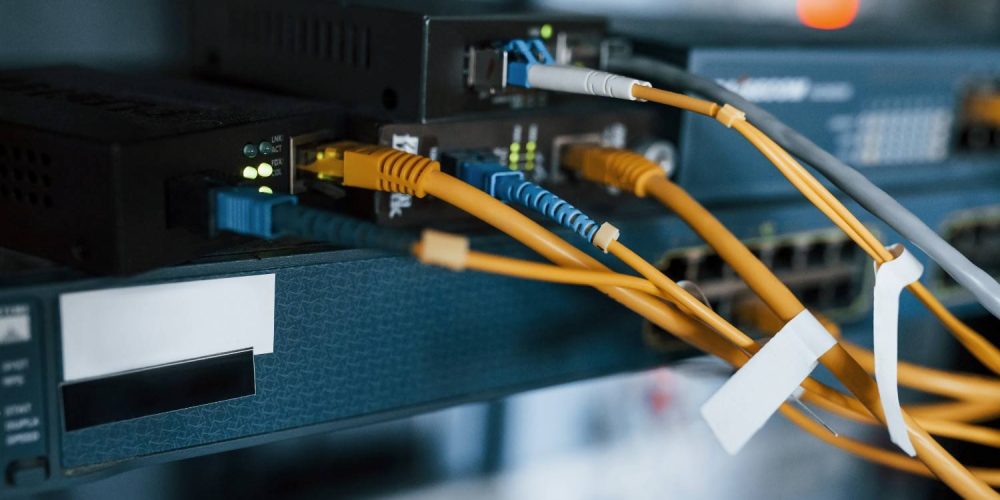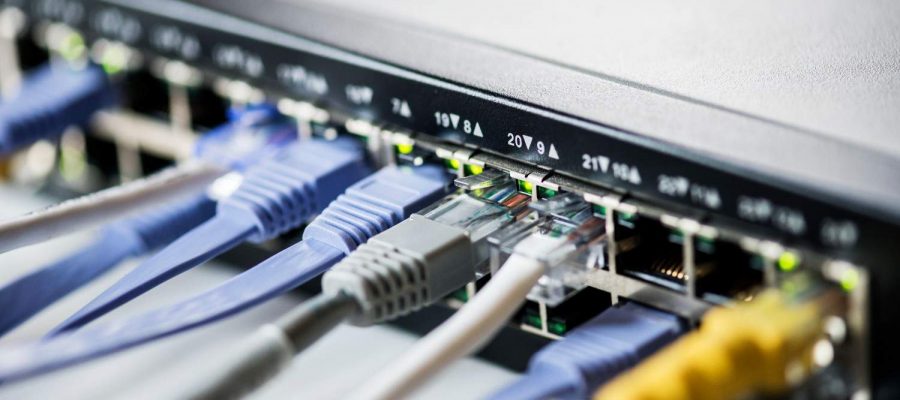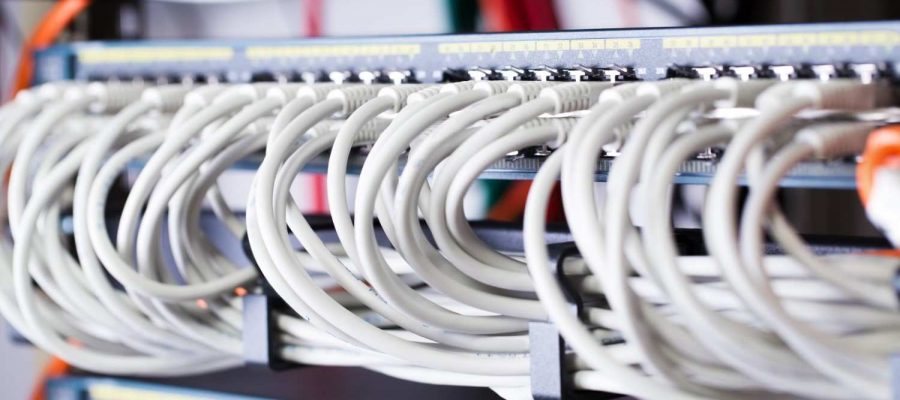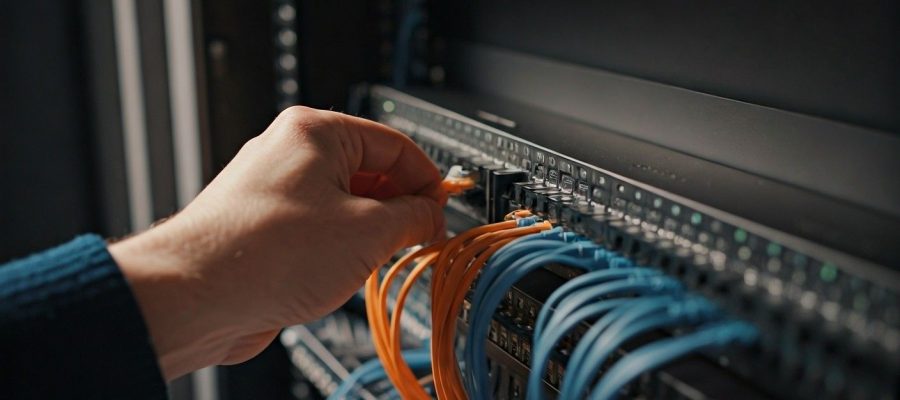Summary: To meet the increasing performance demands, networks must be continuously developed and optimized. With Network Drops’ networking solutions, small businesses can effortlessly monitor and manage their network infrastructure. We simplify scaling with our years of real-world knowledge, increasing visibility and efficiency to guarantee the continuous operation of your most important activities.

Running a small business requires continuous – and usually excessive – reliance on technology. Your network, after all, is the foundation of the processing of payments, customer data storage, remote work arrangements, and relationships with your team. But, as we have seen before, small business owners are still struggling with disconnected networks, outdated networks, or networks that will not grow and change with the growth of their business. The right small business networking solutions will keep your systems online while being the backbone of productivity, security, and development. This article will review how every small business should consider competent networking solutions to remain competitive and resilient in the digital-first world.
A weak or poorly managed network is a liability, not just an inconvenience. In the US, small businesses report that network failures directly reduce revenue, damage reputation, and limit scalability.
These figures particularly harm small enterprises with narrow profit margins. Every minute spent offline results in lost income, labor waste, and eroded consumer confidence.
Given those stakes, your network can’t be an afterthought.
The network plays a key role in starting and growing your business, but selecting and managing the appropriate network can be challenging. A business’s computer network solution enables information and resource sharing among the company’s PCs and devices. These solutions combine different technologies, services, and methodologies used to regulate and optimize activities in computer networks. Similarly, networking solutions enable organizations to improve network performance and reliability and bring solutions for the demands of present-day businesses and users.
Small business networking solutions can also keep your employees connected and productive, regardless of where they are. Small business computer networks can improve your competitiveness against larger businesses by lowering communication costs, improving efficiency, and enhancing customer service.

“A good network” combines devices and software working together. Here are the building blocks.
In many small business cases, using managed switches (vs. unmanaged) significantly improves fault isolation and reduces link-level failures.
Strong Wi-Fi coverage is crucial for contemporary workspaces. To avoid dead zones or interference, business encryption (WPA3, 802.1X), load balancing, numerous APs, and proper channel design must be deployed. The connection between Wi-Fi and cable should be as seamless as possible.
A firewall is your primary gatekeeper. You will want a next-gen firewall (NGFW) that can:
Many small businesses combine firewall appliances with unified threat management (UTM) features to centralize security controls.
Remote work is mainstream. For a secure endpoint, a VPN can allow workers to connect as if they were in the office. Strong encryption (AES-256, SHA-2) and authentication (multi-factor) are necessary. The VPN becomes especially critical whenever workers are on public or home networks.
You need visibility. Monitoring tools (SNMP, NetFlow, RMON) reveal:
Proactive alerts can reduce downtime and help with capacity planning.

When your network is secured the right way, it does more than block threats. It becomes a foundation your business can trust. Below are the advantages small companies gain when they adopt strong security measures through Network Drops.
Security is not optional. The weakest link often determines breach success. Follow these layered practices.
Employ network monitoring solutions (e.g., SolarWinds, PRTG, open-source) to identify anomalies—unexpected outbound traffic, unusual port activity, or device activity. Early detection via alerting can interdict exfiltration or lateral movement.
Potential attackers leverage known weaknesses in routers, switches, firewalls, and endpoints. The U.S. Cybersecurity & Infrastructure Security Agency (CISA) is tracking these vulnerabilities for precisely this reason – organizations often delay applying patches, regardless of the vulnerability (which is easy to exploit).
Most breaches start from phishing, social engineering, or credential theft. IBM/Ponemon and other data show the human element is often the pivot.
Train staff to spot suspicious links, validate sender identities, and avoid using insecure resources.
Even the best network may experience hardware failure. Use:
These measures ensure resilience when something fails.
Don’t let every device see everything. Segment your network (e.g., separate guest Wi-Fi, staff, servers). Use access controls so devices see only what they must. This limits damage if part of the network is compromised.
Require MFA for remote or critical access. Ensure VPNs require strong authentication and do not trust simple credentials alone.

Not every system fits every business. The best choice depends on where the company is today and how it expects to grow.
A network should grow without issues as more employees, devices, and applications log on. Investing in scalable switches and access points can result in long-term financial savings.
Many small businesses do not employ full IT staff. Look for equipment with straightforward dashboards, remote access options, and simple monitoring tools. This allows owners or managers to monitor performance without advanced technical skills.
Every system needs robust security. Firewalls block unauthorized traffic, antivirus software handles malicious files, and VPN support encrypts remote connections. Multi-factor authentication further secures logins.
Setups also demand direction beyond what employees can provide. A managed service provider or networking company should be consulted to ensure the system is created to function both securely and efficiently.
The appropriate small business networking solutions can reimagine how effectively and securely your small business operates. By knowing your current networking situation, planning for expansion, and prioritizing security, you can build a networking system that will support your team and safeguard your information.
Network Drops provides practical solutions for small businesses in Philadelphia and New Jersey. We have spent years building strong, technology-driven partnerships to serve small businesses better. When you work with us, you are not only getting reliable network solutions, you are working with a team that understands the day-to-day challenges and goals of businesses like yours. From professional cabling to secure network hardware and monitoring, we help you build a reliable network, keeping your operations running and adapting as your business grows. Reach out to Network Drops today for a network that works for your business and gives you peace of mind.
AI identifies unusual activities in real time, including unusual log-ins or sudden spikes in traffic. It will also automate the blocking of threats, giving small businesses rapid protection without waiting for manual corrections.
SD-WAN makes it easier to administer a plurality of sites. It decides the best path for traffic, maintains applications running steadily, minimizes downtime, and defends links—all at a lesser cost than previous systems.
The benefits include auto-upgrading, versatility, and off-site access. They are also less expensive for smaller businesses because there is no physical hardware.
Automation handles mundane tasks such as updates and traffic querying. This minimizes mistakes and saves worker time, a factor of particular importance to companies without large IT departments.
Utilize firewalls, VPNs, and antivirus software. Keep outdated hardware and instruct employees not to fall for scams or create weak passwords. A well-designed product and competent employees are the best prevention.
"*" indicates required fields
Scott Fcasni is the driving force behind Shock I.T. Support’s commercial datacomm cabling division, delivering expert solutions that power reliable, high-performance network infrastructures. With extensive experience in structured cabling and a commitment to precision, Scott ensures that every project—whether for small businesses or large enterprises—meets the highest standards of quality and scalability.